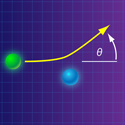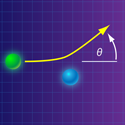Screening and the Coulomb interaction
In the 1960s and 1970s, several papers (see for example Refs. [1–4]) reported the solution to the problem of Coulomb scattering. Starting with a screened Coulomb potential, one could obtain the corresponding screened Coulomb “ matrix.” In the limit of an infinite screening radius, it was stated that the on-shell matrix, which accounts for observable effects, approaches the physical one except for an infinitely oscillating phase factor that is known analytically. Removing this factor—a process called renormalization—it is possible to obtain the physical Coulomb result from the screened Coulomb potential approximation.
This standard renormalization method for determining the physical matrix from a screened on-shell matrix has enjoyed widespread use. However, according to a paper appearing in Physical Review C by Walter Glöckle and Jacek Golak at the Ruhr-Universität Bochum in Germany and Roman Skibiński and Henryk Witała at Jagiellonian University in Kraków, Poland, the accepted renormalization factor is incomplete. The standard analytic renormalization factor, which is generally believed to be valid for any type of screening and is used widely in the literature, is seemingly missing a term that is singular at forward and backward scattering angles.
Glöckle et al. present numerical results to illustrate the error in the standard renormalization approach. The implications of their findings for prior numerical calculations could be significant. – Ben Gibson
[1] V. G. Gorshkov, Sov. Phys. JETP 13, 1037 (2962); 20, 234 (1965).
[2] W. F. Ford, Phys. Rev. 133, B1616 (1964); J. Math. Phys. 7, 626 (9166).
[3] J. R. Taylor, Nuovo Cimento B 23, 313 (1974).
[4] M. D. Semon and J. R. Taylor, Nuovo Cimento A 26, 48 (1975).





